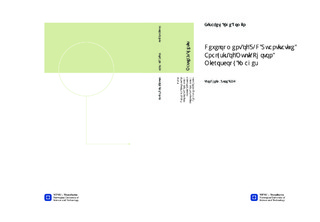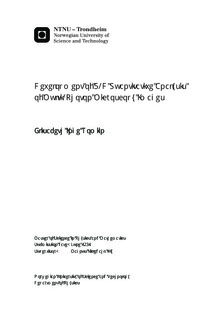| dc.contributor.advisor | Lilledahl, Magnus | nb_NO |
| dc.contributor.author | Romijn, Elisabeth Inge | nb_NO |
| dc.date.accessioned | 2014-12-19T13:17:45Z | |
| dc.date.available | 2014-12-19T13:17:45Z | |
| dc.date.created | 2012-11-08 | nb_NO |
| dc.date.issued | 2012 | nb_NO |
| dc.identifier | 565919 | nb_NO |
| dc.identifier | ntnudaim:7195 | nb_NO |
| dc.identifier.uri | http://hdl.handle.net/11250/246737 | |
| dc.description.abstract | Motivation: Cartilage is a robust but flexible connective tissue found in most joints of the body. The collagen fibres present in the extracellular matrix of cartilage contribute to its tensile strength and stiffness. The purpose of this study is to develop and implement methods to determine the orientation and anisotropy of collagen fibres in 3-D images gen- erated with multi-photon microscopy. The motivation behind developing these techniques is to improve the foundation for further studies on understanding the characteristics of the cartilage matrix. This in turn would give a better foundation for developing artificial matrices and mechanical models, as well as improve diagnostics.Material and methods: The two methods developed in this study are based on analysing the frequency domain. One is an expansion of a previous developed method by Chaudhuri et al. [1]. This method is based on evaluating the average intensity at different directions in the frequency domain. The direction with the least average intensity is equivalent to the direction of the fibres. The other method is based on thresholding the frequency domain according to intensity followed by fitting an ellipsoid to the remaining data set. The direction of the collagen fibres is equivalent to the direction of the shortest axis of the ellipsoid. These methods are called the sector and ellipsoid method, respectively. To determine how robust these methods are a series of tests were developed. The focus of these tests was to determine if the methods are rotational invariant and if the results are influences by different preprocessing techniques. These preprocessing techniques are: median filtering, deconvolution and skeletonization of the original image containing the collagen fibres. It is also important to determine the sensitivity of the ellipsoid method according to the chosen threshold value. In addition data generated fibres and frequency domains were made to determine the accuracy of the methods.Results and conclusion: The sector method was not very robust. For most cases there is not one specific direction that has the least average intensity in the frequency domain. Instead there is a quite large minimum area. The ellipsoid method shows promising results. It managed to find the correct direction both for the data generated data sets, but also for the real images. It seems like no preprocessing nor frequency filtering, except for thresholding, is needed to still find the correct direction and its anisotropy. The only remark is that the automatically chosen threshold value was to low for one of the samples. This can probably be improved by making a slight change in the process for choosing a threshold value. | nb_NO |
| dc.language | eng | nb_NO |
| dc.publisher | Institutt for fysikk | nb_NO |
| dc.subject | ntnudaim:7195 | no_NO |
| dc.subject | MTFYMA fysikk og matematikk | no_NO |
| dc.subject | Teknisk fysikk | no_NO |
| dc.title | Development of 3-D Quantitative Analysis of Multi-Photon Microscopy Images | nb_NO |
| dc.type | Master thesis | nb_NO |
| dc.source.pagenumber | 82 | nb_NO |
| dc.contributor.department | Norges teknisk-naturvitenskapelige universitet, Fakultet for naturvitenskap og teknologi, Institutt for fysikk | nb_NO |

